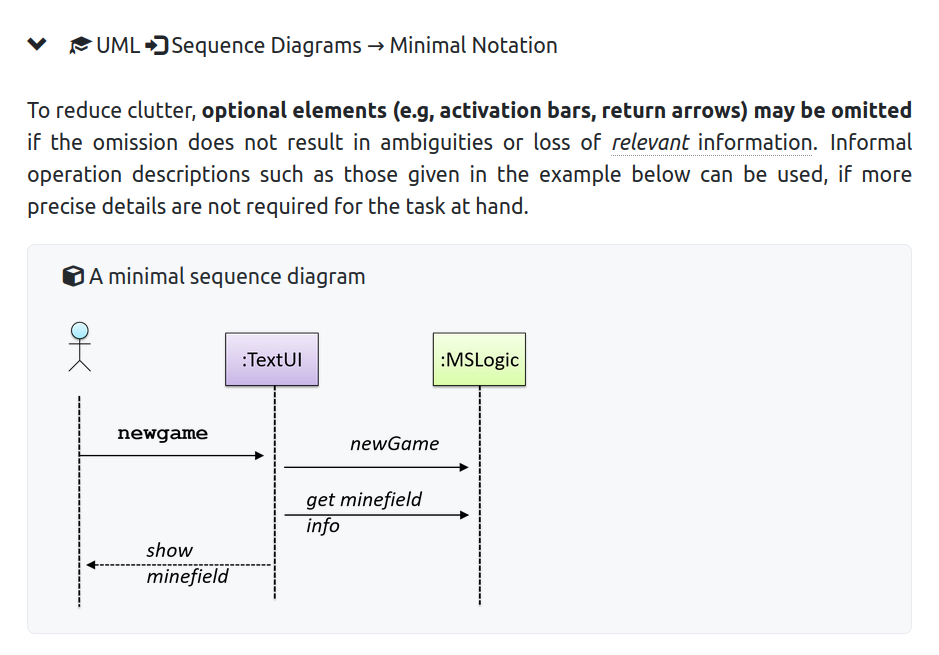Team's Response
Thank you for pointing this out, however, we have intentionally omitted the arguments for execute in order to reduce clutter as we do not feel that it adds a lot to the diagram. This is acceptable according to the textbook as seen here:

Items for the Tester to Verify
:question: Issue response
Team chose [response.NotInScope]
- [x] I disagree
Reason for disagreement: I think the team has misunderstood the section in the textbook about minimal notation. While it is possible to reduce the use of certain notation (i.e. return arrows and activation bars), they can only removed IF the omission does not result in ambiguities or loss of information (as seen in the screenshot sent).
However, when execute() is used, it is indicating that a method call of v.execute() is made. As mentioned in my initial report with the code snippet of the execute(Model) method signature, this method must receive a Model parameter. Therefore, by intentionally omitting the arguments of the execute method, it definitely creates ambiguities about the method that is being called since execute() without parameters does not exist. This, in turn, makes the sequence diagram inaccurate as it does not properly document the methods that are being called and can cause confusion in readers.
we do not feel that it adds a lot to the diagram
I strongly believe that accuracy is a major component of a sequence diagram, otherwise, there is no point in using diagrams in the first place. Hence, the model parameter absolutely adds value to the diagram.
If the team had wanted to omit the use of model, they should have followed the textbook's section they had cited and changed it to executes without indicating that it is a method call.
The sequence diagram under the Logic component of the DG does not use
execute(model), instead it usesexecute()which is not a valid method in the codebase given the following method signature for execute:This is also present in the other
execute()calls in the sequence diagrams: